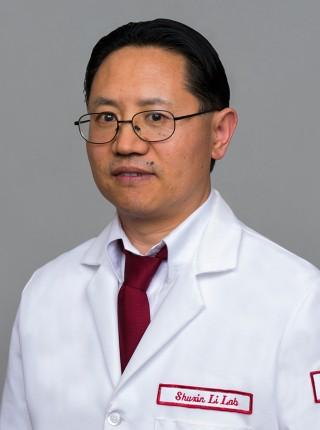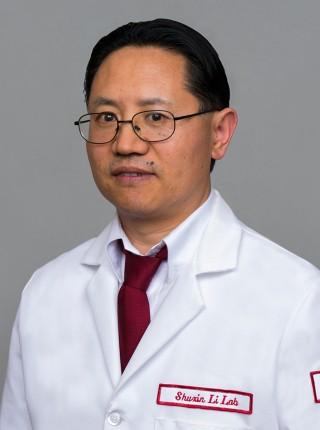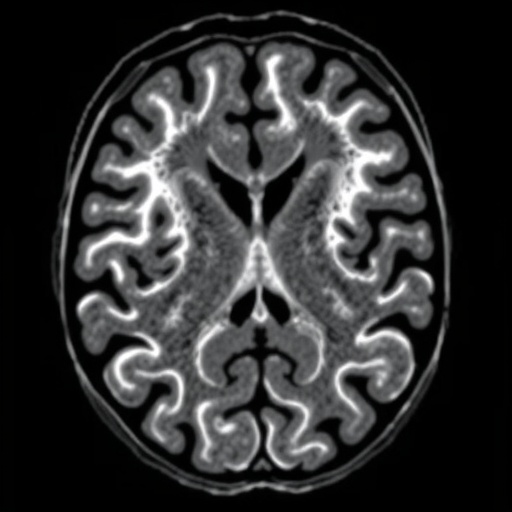
Credit: Lewis Katz School of Medicine at Temple University
(Philadelphia, PA) – Restoring the ability to walk following spinal cord injury requires neurons in the brain to reestablish communication pathways with neurons in the spinal cord. Mature neurons, however, are unable to regenerate their axons to facilitate this process. Now, in new research, scientists at the Lewis Katz School of Medicine at Temple University (LKSOM) show that this limitation may be overcome by targeting liver kinase B1 (LKB1) protein. In mice with spinal cord injury, targeted LKB1 upregulation stimulated long-distance neuron regeneration, leading to gains in functional recovery.
"Our investigation shows that LKB1 is critical to the control of axon regeneration in mature neurons," explained Shuxin Li, MD, PhD, Associate Professor at Shriners Hospital's Pediatric Research Center and the Department of Anatomy and Cell Biology at LKSOM and lead investigator on the new study. The report was published online in the journal Molecular Therapy.
The discovery of proteins that serve a central role in neuron regeneration is key to the development of drug therapies that have the potential to help patients regain function in their limbs after spinal cord injury, which damages or severs connections between axons in the brain and neurons in the spinal cord. Dr. Li and colleagues are the first to describe LKB1 as one of these proteins.
Dr. Li's team identified LKB1 as a potential target through their investigations of molecular pathways affected by chondroitin sulphate proteoglycans (CSPGs). CSPGs are abundant around spinal cord lesions, where a CSPG-enriched extracellular matrix forms and ultimately blocks the regrowth of axons that have been crushed or severed by injury. While LKB1 is a suspected regulator of early-stage development, its influence on adult neurons in the central nervous system has been unclear.
Dr. Li and colleagues found that in mice, LKB1 protein expression in the cerebral cortex starts out relatively high and decreases with age, reaching its lowest levels in adult animals. When they added LKB1 in adeno-associated virus (AAV) vectors AAV2 and AAV9 to adult mouse neurons in cell culture, they discovered that the protein stimulated neuron growth.
The researchers then tested the effects of LKB1 in live animals with injured spinal cords. Local injection into the sensorimotor cortex induced significant axon regeneration into the lesion area. Vigorous axon regeneration was observed following systemic injection of AAV9-LKB1 after spinal cord injury.
Several weeks after treatment, mice were evaluated for changes in locomotor function. Compared to controls, both AAV2- and AAV9-treated animals exhibited significant functional gains, with improvements in coordination, movement of the hind paws, and hind paw grasping. "This outcome indicates that LKB1 influences neuronal growth in functionally meaningful ways in injured animals," Dr. Li explained.
Dr. Li plans to verify the functional effects of LKB1 in other model systems, which could lead to the development of a translational model for eventual clinical research. "We have opened a path to translational studies, since AAVs can be applied to treatments for human patients," he said.
The latest work also builds on previous research carried out in Dr. Li's lab on systemic treatment with peptides capable of regenerating neurons. In 2011, for example, his team found that peptides against CSPG receptor leukocyte common antigen-related phosphatase facilitates axon growth and recovery of limb movement in mice with damaged spinal cords. "We want to investigate the combination of LKB1 with some of these other peptides, since together these molecules could be highly effective in healing neurons affected by spinal cord injury," he added.
###
Other researchers contributing to the work include Yosuke Ohtake, Armin Sami, Xinpei Jiang, Makoto Horiuchi, Kieran Slattery, and Lena Ma, Shriners Hospitals Pediatric Research Center and the Department of Anatomy and Cell Biology, LKSOM; George M. Smith, Shriners Hospitals and Department of Neuroscience, LKSOM; Michael E. Selzer, Shriners Hospitals and the Department of Neurology, LKSOM; and Shin-ichi Muramatsu, Division of Neurology, Jichi Medical University, Shimotsuke, Tochigi, Japan.
The research was supported in part by National Institutes of Health grants 1R01NS079432 and 1R01EY024575 and Shriners Research Foundation grants SHC-85100, SHC-86300-PHI, and SHC- 86200-PHI-16.
About Temple Health
Temple University Health System (TUHS) is a $2.1 billion academic health system dedicated to providing access to quality patient care and supporting excellence in medical education and research. The Health System consists of Temple University Hospital (TUH), ranked among the "Best Hospitals" in the region by U.S. News & World Report; TUH-Episcopal Campus; TUH-Northeastern Campus; Fox Chase Cancer Center, an NCI-designated comprehensive cancer center; Jeanes Hospital, a community-based hospital offering medical, surgical and emergency services; Temple Transport Team, a ground and air-ambulance company; and Temple Physicians, Inc., a network of community-based specialty and primary-care physician practices. TUHS is affiliated with the Lewis Katz School of Medicine at Temple University, and Temple University Physicians, which is Temple Health's physician practice plan comprised of more than 500 full-time and part-time academic physicians in 20 clinical departments.
The Lewis Katz School of Medicine (LKSOM), established in 1901, is one of the nation's leading medical schools. Each year, the School of Medicine educates more than 800 medical students and approximately 240 graduate students. Based on its level of funding from the National Institutes of Health, the Katz School of Medicine is the second-highest ranked medical school in Philadelphia and the third-highest in the Commonwealth of Pennsylvania. According to U.S. News & World Report, LKSOM is among the top 10 most applied-to medical schools in the nation.
Temple Health refers to the health, education and research activities carried out by the affiliates of Temple University Health System (TUHS) and by the Katz School of Medicine. TUHS neither provides nor controls the provision of health care. All health care is provided by its member organizations or independent health care providers affiliated with TUHS member organizations. Each TUHS member organization is owned and operated pursuant to its governing documents.
Media Contact
Jeremy Walter
[email protected]
267-838-0398
@TempleHealthMed
http://www.templehealth.org/
Original Source
https://www.templehealth.org/News/TempleScientistsIdentifyNovelTargetforNeuronRegenerationbrandFunctionalRecoveryinSpinalCordInjury?id=3247&showBack=true&PageIndex=0&cid=13





